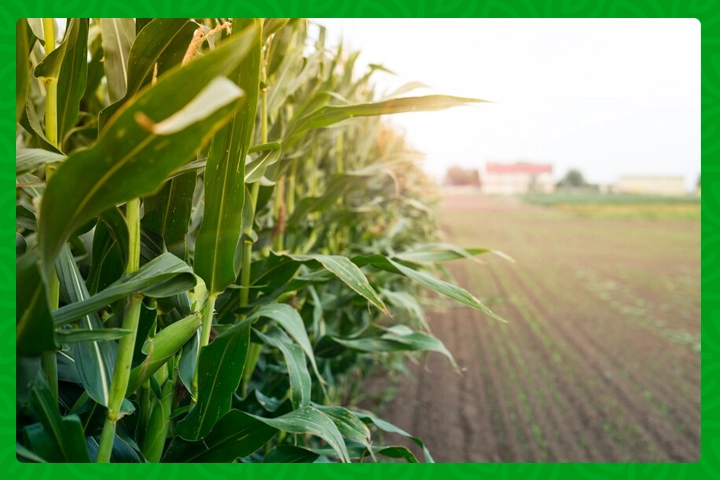
Rwanda’s bountiful harvests paint a vivid picture of agricultural prosperity in 2023, as detailed in the Seasonal Agricultural Survey 2023 annual report by the National Institute of Statistics of Rwanda (NISR). The report delves into the performance of key crops prioritized under the Crop Intensification Programme (CIP), serving as a beacon of nutrition for the nation.
The Seasons Unveiled
The agricultural canvas unfolded in three vibrant seasons: Season A (September 2022 – February 2023), Season B (March – June 2023), and Season C (July – September 2023). These pivotal periods set the stage for remarkable strides in Rwanda’s agrarian landscape, influencing not just the economy but also the well-being of its people.
Insights from the Crop Frontier
Here’s a detailed analysis of the performance of Rwanda’s key crops in 2023, showcasing cultivation areas, production figures, and yields.
1. Maize: A Gold Rush in the Fields
Maize took center stage with a cultivated area of 226,982 hectares in Season A, marking a 3.3% increase from 2022. Season B witnessed a 15% rise, totaling 93,927 hectares. A staggering 508,000 tonnes of maize graced the harvest, boasting an 11% increase from the previous year. The average yield stood at 1.7 tonnes per hectare in Season A and 1.3 tonnes per hectare in Season B, a remarkable 11% surge from 2022.
2. Irish Potatoes: Nurturing the Roots
Irish potatoes experienced a nuanced journey. Season A saw a slight dip in cultivation area by 1.5%, whereas Season B witnessed a 9.1% decrease. Season C, however, rebounded with an 0.8% increase. Despite the fluctuations, the annual production exceeded 865,000 tonnes. The average yield per hectare showcased consistency across the seasons: 8.2 tonnes in Season A, 6.7 tonnes in Season B, and 7.9 tonnes in Season C.
3. Cassava: The Rising Star
Cassava emerged as a star performer with a 28.5% increase in cultivation area in Season A and a 4% rise in Season B. Despite a slight dip in production to 1.34 million tonnes, the average yield remained impressive at 13.5 tonnes per hectare in Season A and 14.8 tonnes per hectare in Season B.
4. Paddy Rice: Grains of Prosperity
Cultivation of paddy rice expanded by 1.9% in Season A and 1% in Season B. The harvest, totaling 133,628 tonnes, showcased a slight reduction from the previous year. Noteworthy is the average yield of 3.96 tonnes per hectare in Season A and 4.2 tonnes per hectare in Season B.
5. Beans: A Tapestry of Growth
Beans faced a dip in cultivation area by 13.8% in Season A but rebounded with a 15% increase in Season B and a 5.6% rise in Season C. The total production of over 441,000 tonnes was marginally less than 2022. The average yield per hectare exhibited an upward trajectory: 632 kilos in Season A, 789 kilos in Season B, and 1,003 kilos in Season C.
Farming Wisdom: Inputs and Irrigation
The survey uncovered key insights into farming practices. In Season A, 37.1% of farmers embraced improved seeds, with a subsequent decrease to 20.8% in Season B. Season C, however, witnessed a surge to 20.7%. Inorganic fertilizer usage was prominent, with 59.6% in Season A, 51.6% in Season B, and 74.5% in Season C. Notably, irrigation practices increased from 10.3% in Season A to 64.6% in Season C.
Cultivating Success Beyond Borders
Rwanda’s agricultural panorama in 2023 reflects a commitment to growth and sustainability. The meticulous analysis of crop yields underlines the resilience of the farming community and the nation’s dedication to ensuring food security. As we delve into the intricate details of cultivation, production, and yield, it’s evident that Rwanda is not just cultivating crops but cultivating success, one harvest at a time.
Original article was written by Emmanuel Ntirenganya


















